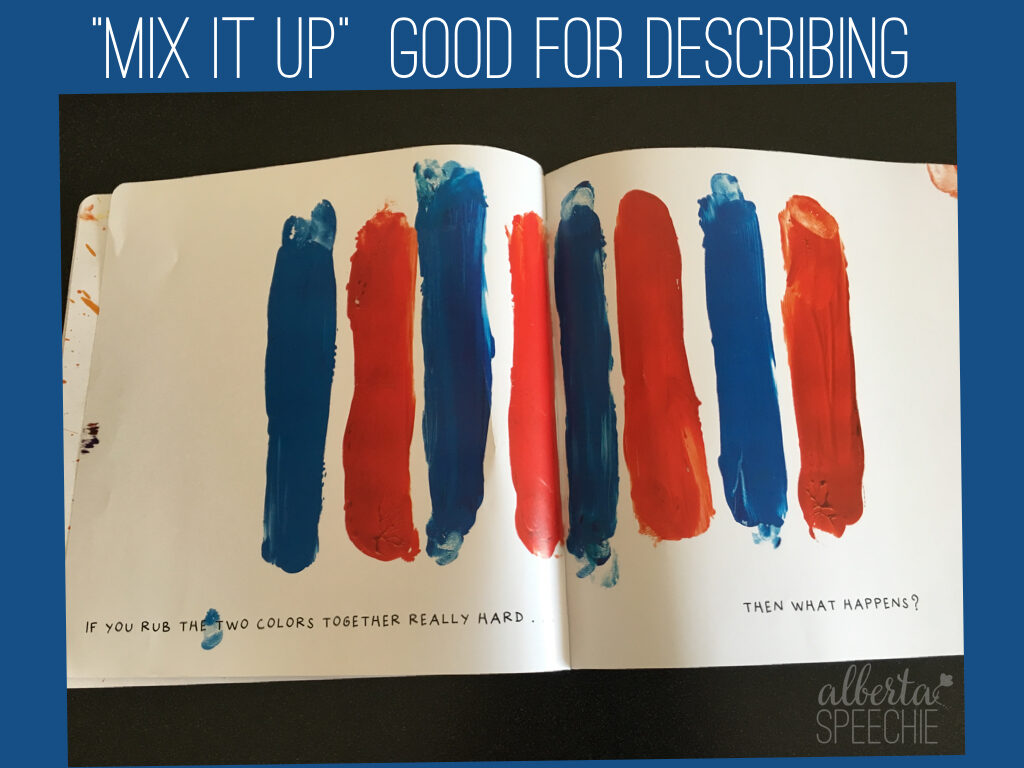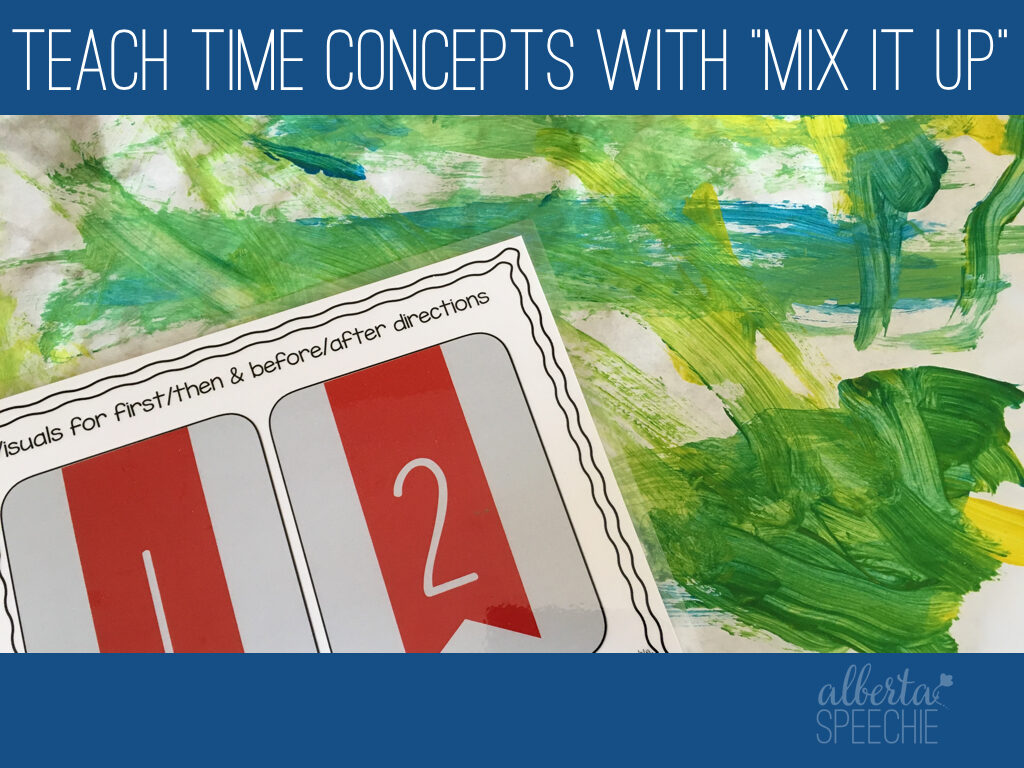As you have seen in previous posts, I love to use books in therapy. I love the variety of vocabulary you can target, love that you are working on literacy skills and books are a great jumping off point for working on many many speech and language goals. This week I’d love to talk about the book “Mix It Up” by Herve Tullet (As usual, I don’t profit in any way in promoting this book). You might know him from his other book, “Press Here.” Speech Sprouts wrote a great post on how to use “Press Here” in therapy (click here for a link to that post).
“Mix it Up” uses a variety of verbs such as rub, smudge, and tilt. Children also get to see the verbs in action which helps with comprehension and you can incorporate them into later art projects. As an activity I have had the children recreate parts of the book which has been a great hit.
I have also use this book to work on describing skills. The pictures as simple enough for children learning to describe what they see but still provide enough variety of vocabulary. As you can see in the picture above, children can talk about making patterns, painting long stripes, using the colours blue and red. As an extension activity, I have had children paint a simple picture and describes their picture or one of their friend’s picture.
I have used this book to introduce and work on time concepts such as “before” and “after.” One activity I really like is a group painting activity (although it could be a one on one or smaller group activity). I did this activity the other day and it went great! I used three colours (green, yellow and blue) and a visual board to help with the order of the directions. I had a small swatch of each of the colours. I first told the direction and put the colours in the appropriate places not the visual board. I then repeated the instruction again as the child is adding their part to the painting. The children really responded well and as they become more proficient, you can use less and less cuing.
Another reason I like this group painting exercise is that the children will often (and I encourage them) to make comments about the other children’s work. It is good for
- using conversational starters such as “what is your favourite colour?” or “what do like to paint?”
- learning to give compliments (e.g. “I like your bug.” or “Your man is cool.”)
- learning to accept compliments (this can be so challenging for some).
- learning when to talk and when to wait their turn or when it is time to listen or watch.
- helping children take turns and work as a team.



